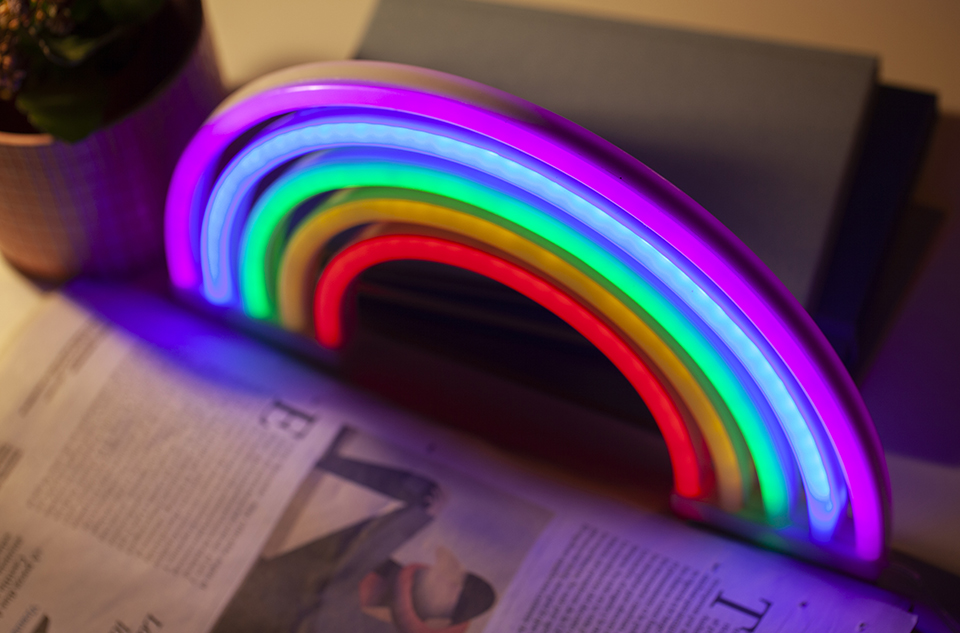Time:2025-05-27
The hospitality industry thrives on creating immersive environments, and high-density RGB neon flex strips are emerging as a cornerstone of modern bar design. These advanced lighting solutions combine vibrant color dynamics, durability, and adaptability, transforming bars into captivating social hubs. This article explores their technical advantages, strategic applications, and trends reshaping nightlife and hospitality spaces.
Why High-Density RGB Neon Flex Strips Dominate Bar Lighting
High-density LED configurations in neon flex strips offer distinct benefits for bars:
Vivid Color Saturation: Packed with tightly spaced LEDs, these strips deliver intense, uniform illumination, ensuring vibrant hues stand out even in low-light settings.
Dynamic Flexibility: Bendable designs contour to curved bars, circular booths, or intricate backdrops, enabling creative layouts impossible with rigid lighting.
Durability: Encased in silicone, they resist spills, humidity, and frequent cleaning—critical for high-traffic, liquid-heavy environments.
These features make them ideal for bars aiming to balance aesthetics with practicality.

Strategic Applications in Bar Design
Counter and Backbar Lighting: Line the underside of counters or shelves to create a floating effect, drawing attention to premium liquors or signature cocktails.
Architectural Accentuation: Outline unique structural elements like arched ceilings, stone walls, or custom artwork to amplify visual depth.
Thematic Versatility: Shift colors to match events (e.g., red for Valentine’s Day, green for St. Patrick’s) or music genres (pulsing blues for jazz, strobe effects for EDM nights).
Interactive Zones: Install motion-sensitive strips under footrails or tables that react to guest movements, fostering engagement.
For example, a speakeasy in Berlin uses high-density RGB strips to mimic a starry sky on its vaulted ceiling, syncing colors to live DJ sets.
Technical Innovations Enhancing Bar Environments
Smart Control Integration: Manage colors, brightness, and effects via apps or voice commands, allowing staff to adjust lighting without interrupting service.
Pixel Mapping: Individually addressable LEDs enable animated patterns (e.g., cascading lights, ripples) that align with music beats or promotional content.
Heat Management: Advanced thermal designs prevent overheating during extended use, ensuring longevity in packed venues.
IP67 Waterproofing: Protect strips behind bars or in outdoor patio areas exposed to moisture.
Trends Shaping Nightlife Lighting in 2024
Hyper-Personalization: Let patrons control lighting via QR codes linked to their tables, enhancing their experience.
Biophilic Blends: Pair neon flex with natural materials like reclaimed wood or copper for rustic-modern aesthetics.
Branded Lightscapes: Custom animations featuring bar logos or slogans projected via LED mappings.
Sustainability Focus: Energy-efficient strips paired with solar or battery backups to reduce operational costs.
Installation and Maintenance Best Practices
Pre-Installation Planning: Use 3D modeling software to visualize layouts and avoid overlighting.
Secure Mounting: Opt for industrial-grade adhesives or aluminum channels in areas prone to bumps or vibrations.
Zoning Circuits: Divide strips into sections (e.g., bar front, seating, dance floor) for targeted control and troubleshooting.
Routine Checks: Inspect connections and clean surfaces monthly to maintain peak performance.
Overcoming Hospitality-Specific Challenges
Ambient Balance: Avoid overwhelming patrons by blending neon with softer, indirect lighting like pendant lamps or candles.
Regulatory Compliance: Ensure installations meet local fire and electrical codes, especially in historic buildings.
Budget Optimization: Prioritize high-impact zones (e.g., bar counters, entrance arches) to maximize ROI without overspending.
Case Studies: Neon Flex in Action
Nightclub Upgrade: A Miami club reduced energy costs by 35% after replacing traditional neon with high-density RGB strips, while boosting social media buzz with UV-reactive cocktail displays.
Rooftop Bar Revival: A London rooftop venue used waterproof strips to outline glass railings, creating a luminous skyline view that increased weekday traffic by 50%.
Themed Pop-Up: A temporary tiki bar in Los Angeles employed animated neon waves to simulate ocean vibes, driving a 200% surge in Instagram tags.
Conclusion
High-density RGB neon flex strips for bars are more than lighting—they’re tools for storytelling, brand differentiation, and customer retention. By leveraging their adaptability, energy efficiency, and smart capabilities, bars can craft unforgettable atmospheres that keep patrons returning.
To stay competitive, partner with suppliers offering tailored solutions, robust warranties, and design support. In an industry where ambiance is currency, these lighting systems illuminate not just spaces, but opportunities for innovation and growth.